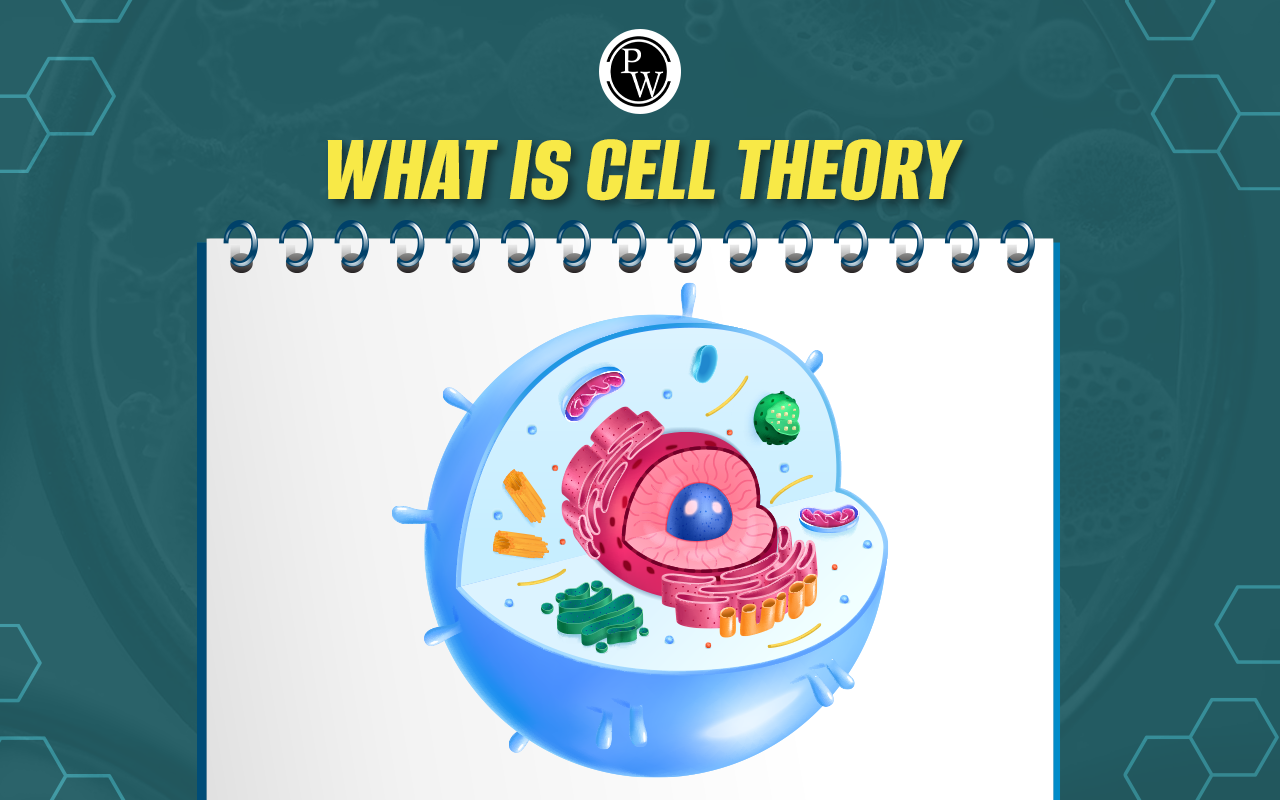
Chemical Kinetics MCQs: When preparing for the NEET (National Eligibility cum Entrance Test), it's essential to focus on mastering the Chemical Kinetics chapter. This chapter is a key part of Class 12 NEET Chemistry Syllabus and covers important concepts about how chemical reactions occur and how their rates are determined.
Practicing multiple-choice questions (MCQs) from this chapter will greatly enhance your understanding and help you perform well in the exam. This guide will cover various aspects of Chemical Kinetics MCQs, including their importance and preparation strategies.Chemical Kinetics MCQs For NEET
The Chemical Kinetics chapter is important for NEET preparation. To excel in NEET, you need to practice MCQs on these topics. Regular practice helps you understand these concepts better and improves your ability to solve problems quickly and accurately. By solving MCQs, you can become familiar with the types of questions that appear on the exam and the best strategies for answering them. Additionally, reviewing past NEET questions on Chemical Kinetics can give you insights into the NEET exam format and question types. This practice is important for effective NEET exam preparation.Also Check:
Chemical Kinetics MCQs Class 12
In Class 12 Chemistry, the Chemical Kinetics chapter is essential for NEET preparation. To prepare effectively, start by studying the fundamental concepts. Understanding these basics is crucial for solving problems accurately. Next, regularly practice multiple-choice questions (MCQs) related to Chemical Kinetics. This practice will not only enhance your understanding but also improve your speed and accuracy in answering questions. Additionally, make use of your class notes and textbooks to review and strengthen these concepts. Regular practice combined with a solid grasp of the basics will make you more efficient and better prepared for the NEET exam.Chemical Kinetics MCQs With Answers
Practicing Chemical Kinetics MCQs with answers is highly beneficial for NEET preparation. These questions test understanding of key concepts such as calculating reaction rates, determining reaction order, and interpreting experimental data. Reviewing the answers provides valuable insights, helping to deepen theoretical knowledge and enhance problem-solving skills. To maximize benefits, it is essential to work through MCQs carefully and study the provided solutions. This methodical approach will improve exam readiness and boost performance on the actual exam day. By focusing on these practices, one can effectively prepare for the Chemical Kinetics section of the NEET exam, ensuring thorough preparation and confidence when taking the NEET exam.
Q 1. Chemical reaction which occurs slowly at room temperature is;
(1) Rusting of Iron (2) Precipitation of AgCl (3) Neutralization of HCl (4) Hydrolysis of EstersAns: 1
Q 2. The branch of chemistry which deals with the reaction rates and reaction mechanism is;
(1) Thermochemistry (2) Photochemistry (3) Analytical chemistry (4) Chemical kineticsAns: 4
Q 3. In the reaction; A + 2B → 3C + D which of the following expression does not describe changes in the concentration of various species as a function of time?
(1) {d[C]/dt} = – {3d[A]/dt} (2) {3d[D]/dt} = {d[C]/dt} (3) {3d[B]/dt} = – {2d[C]/dt} (4) {2d[B]/dt} = {d[A]/dt}Ans: 4
Q 4. When a chemical reaction takes place, during the course of the reaction the rate of reaction: (excluding zero order)
(1) keeps on increasing with time. (2) remains constant with time. (3) keeps on decreasing with time. (4) shows irregular trend with time.Ans: 3
Q 5. Which of the following statements is correct?
(1) The rate of a reaction decreases with passage of time as the concentration of reactants decreases. (2) The rate of a reaction is same at any time during the reaction. (3) The rate of a reaction is independent of temperature change. (4) The rate of a reaction decreases with increase in concentration of reactant(s).Ans: 1
Q 6. The average rate and instantaneous rate of a reaction are equal;
(1) at the start. (2) at the end. (3) in the middle. (4) when two rates have a time interval equal to zero.Ans: 4
Q 7. The rate of a chemical reaction tells us about;
(1) the reactants taking part in reaction. (2) the products formed in the reaction. (3) how slow or fast the reaction is taking place. (4) None of theseAns: 3
Q 8. Which of the following reaction does not occur fastly?
(1) Precipitation of AgCl by mixing aqueous solutions of AgNO3 and NaCl (2) Burning of gasoline (3) Rusting of Iron (4) Burning of LPG for cookingAns: 3
Q 9. Chemical kinetics is a study to find out;
(1) The feasibility of a chemical reaction. (2) Extent to which a reaction will proceed. (3) Speed of a reaction. (4) All of theseAns: 4
Q 10. Rate of a reaction can be defined as;
(1) The rate of decrease in concentration of any one of the reactants. (2) The rate of increase in concentration of any one of the products. (3) The rate of decrease in concentration of any one of the reactants or the rate of increase in concentration of any one of the products. (4) The sum of the rate of decrease in concentration of all the reactants or the rate of increase in concentration of all the products.Ans: 3
Q 11. The rate of reaction;
(1) increases as the reaction proceeds. (2) decreases as the reaction proceeds. (3) remains the same as the reaction proceeds. (4) may decrease or increase as the reaction proceeds.Ans:
Q 12. The rate of reaction between two specific time intervals is called;
(1) Instantaneous rate (2) Average rate (3) Specific rate (4) Ordinary rateAns: 2
Q 13. The instantaneous rate of a chemical reaction is;
(1) Rate of reaction in the beginning. (2) Rate of reaction at the end. (3) Rate of reaction at a given instant. (4) Rate of reaction between two specific time intervals.Ans: 3
Q 14. In the beginning, the decrease in the concentration of reactants is;
(1) Slow (2) Moderate (3) Rapid (4) None of theseAns: 3
Q 15. The rate law for a reaction, A + B → C + D, given by the expression k[A]. The rate of reaction will be;
(1) Doubled on doubling the concentration of B (2) Halved on reducing the concentration of A to half (3) Decreased on increasing the temperature of the reaction (4) unaffected by any change in concentration or temperatureAns: 2
Q 16. The rate constant of a reaction depends upon;
(1) Temperature of the reaction (2) Extent of the reaction (3) Initial concentration of the reactants (4) The time of completion of the reactionAns: 1
Q 17. Rate law for the reaction A + 2B → C is found to be rate = k[A][B]. The concentration of reactant B is doubled, keeping the concentration of A constant, the value of rate of the reaction will be;
(1) same (2) doubled (3) quadrupled (4) halvedAns: 2
Q 18. In a chemical reaction, the rate of a chemical reaction increases with temperature. The reason is due to;
(1) The number of collisions between molecules decreases. (2) Decreases in activation energy. (3) Increase in the number of molecules with activation energy. (4) The kinetic energy of reactants increases.Ans: 4
Q 19. Under a given set of experimental conditions with an increase in the concentration of the reactants, the rate of chemical reaction except for zero order reaction;
(1) Decreases (2) Increases (3) Remains constant (4) First decreases and increasesAns: 2
Q 20. The role of a catalyst is to change;
(1) Gibbs energy of reaction (2) Enthalpy of reaction (3) Activation energy of reaction (4) Equilibrium constantAns: 3
Q 21. In the presence of a catalyst, the heat evolves or is absorbed during the reaction___.
(1) increases (2) decreases (3) remains unchanged (4) may increase or decreaseAns: 3
Q 22. Which of the following is not a direct factor affecting the rate of a reaction?
(1) Temperature (2) Presence of catalyst (3) Order of reaction (4) MolecularityAns: 4
Q 23. Which of the following will lead to an increase in the rate of the reaction?
(1) Decrease in temperature (2) Decreasing concentration of reactants (3) Addition of catalyst (4) Addition of inhibitorAns: 3
Q 24. What happens to the rate of the reaction on increasing its temperature?
(1) Rate of reaction increases (2) Rate of reaction decreases (3) The rate of reaction fluctuates between its maxima and minima (4) Rate of reaction is independent of temperatureAns: 1
Q 25. Which of the following laws states that the rate of a chemical reaction is directly proportional to the concentration of reactants?
(1) Henry's law (2) Law of conservation of mass (3) Law of mass action (4) Daltons' lawAns: 3
Q 26. What happens to the value of ∆G of a reaction when a catalyst is added to it?
(1) It increases. (2) It decreases. (3) It remains unchanged. (4) It is undefined to add a catalyst.Ans: 3
Q 27. What is the change in the rate of a second-order reaction when the concentration of the reactant is increased by 2 times its initial value?
(1) It doubles. (2) No change. (3) It quadruples. (4) It triples.Ans: 3
Q 28. When the two reactants are in the same phase, then which common phase will ensure that the products are formed at the fastest pace?
(1) Solid (2) Liquid (3) Gas (4) The rate of a reaction is independent of the phase of the reactants.Ans: 3
Q 29. Which of the following is a factor that automobile engines use to increase the rate of its internal reactions?
(1) Concentration of fuel (2) Viscosity of the fuel (3) Surface area of the reactants (4) Nature of the fuelAns: 3
Q 30. Catalyst is a substance, which _____ chemical reaction.
(1) increases the speed of a (2) decreases the speed of a (3) can either increase or decrease the speed of a (4) alters the value of the equilibrium constant in a reversibleAns: 1
Q 31. The rate expression for a homogeneous reaction comprises of ______.
(1) a concentration-dependent term only. (2) a temperature-dependent term only. (3) a concentration-dependent term and a temperature-dependent term. (4) a catalyst weight-dependent term.Ans: 3
Q 32. If the surface area is increased, the rate of reaction;
(1) decreases. (2) increases. (3) remains constant. (4) not affected.Ans: 2
Q 33. The factor which slows down the rate of reaction is;
(1) High temperature (2) More concentration of reactants (3) Small size of particles (4) Lowering the temperatureAns: 4
Q 34. The rate of reaction depends upon all except;
(1) Nature of reactants (2) Molecularity (3) Pressure (4) TemperatureAns: 2
Q 35. Which of the following factors can influence the rate of chemical reaction?
(1) Colour of reactants (2) Total mass of reactant (3) Physical state of reactants (4) MolecularityAns: 3
Q 36. A catalyst increases the rate of a chemical reaction by;
(1) changing the reactants into products. (2) lowering the activation energy. (3) increasing the concentration of the reactants. (4) increasing the pressure of the reactants.Ans: 2
Q 37. The unit of rate and rate constant are the same for a;
(1) Zero order reaction (2) First order reaction (3) Second order reaction (4) Third order reactionAns: 1
Q 38. Statement-I: The molecularity of a reaction may be either whole number or fractional.
Statement II: Molecularity is the number of molecules taking part in a single-step reaction.
(1) Both Statement I and Statement II are correct. (2) Both Statement I and Statement II are incorrect. (3) Statement I is correct but Statement II is incorrect. (4) Statement I is incorrect but Statement II is correct.Ans: 4
Q 39. For a single-step reaction, X + 2Y → Products, the molecularity is;
(1) Zero (2) 2 (3) 3 (4) 1Ans: 3
Q 40. Statement-I: For Complex reactions, the order of the reaction is not influenced by the stoichiometric coefficient of the reactants. It can be determined only experimentally and is always a whole number.
Statement-II: Order of a reaction is the sum of power to the concentration terms of reactants in the rate law expression for the rate of reaction.
(1) Both Statement I and Statement II are correct. (2) Both Statement I and Statement II are incorrect. (3) Statement I is correct but Statement II is incorrect. (4) Statement I is incorrect but Statement II is correct.Ans: 4
Q 41. In a zero-order reaction for every 10°C rise of temperature, the rate is doubled. if the temperature is increased from 10°C to 100°C, the rate of reaction will become.
(1) 256 times (2) 512 times (3) 64 times (4) 128 timesAns: 2
Q 42. Consider a reaction A → B + C. If the initial concentration of A was reduced from 4 M to 2M in 1 hour and from 2M to 1M in 0.5 hours, the order of the reaction is;
(1) Second (2) First (3) Third (4) ZeroAns: 4
Q 43. A zero-order reaction is 25% complete in 30 seconds. What time does it take for 50% completion?
(1) 40 s (2) 70 s (3) 50 s (4) 60 sAns: 4
Q 44. The half-life of a given reaction is doubled if the initial concentration of the reactant is doubled. What is the order of the reaction?
(1) 0 (2) 1 (3) 2 (4) 4Ans: 1
Q 45. If the zero-order reaction takes 100 min for 50 % completion, how much time (min) will it take for the 75% completion of the reaction?
(1) 120 min (2) 140 min (3) 150 min (4) 160 minAns: 3
Q 46. A substance (initial concentration ‘a’) reacts according to zero-order kinetics. The time it takes for the completion of the reaction is;
(1) a/k (2) a/2k (3) k/a (4) 2k/aAns: 1
Q 47. For a chemical reaction, X → Y, the rate of reaction increases by a factor of 1.837 when the concentration of X is increased by 1.5 times, the order of the reaction with respect to X is;
(1) 1 (2) 2 (3) 1.5 (4) 2.5Ans: 3
Q 48. The order of reaction can be;
(1) Zero (2) Whole number (3) Fraction (4) Integer, fraction, zeroAns: 4
Q 49. Statement-I: If in a zero order reaction, the concentration of the reactant is doubled, the half-life period is also doubled.
Statement-II: For a zero-order reaction, the rate of reaction is independent of initial concentration.
(1) Both Statement-I and Statement-II are correct. (2) Both Statement-I and Statement-II are incorrect. (3) Statement-I is correct but Statement-II is incorrect. (4) Statement-I is incorrect but Statement-II is correct.Ans: 1
Q 50. Statement-I: For zero order reaction, the concentration vs time graph is a straight line.
Statement-II: The rate of change of concentration per unit time in zero order reaction remains constant.
(1) Both Statement-I and Statement-II are correct. (2) Both Statement-I and Statement-II are incorrect. (3) Statement-I is correct but Statement-II is incorrect. (4) Statement-I is incorrect but Statement-II is correct.Ans: 1
Q 51. The reaction of high molecularity are rare because;
(1) Many body collisions have a low probability. (2) Many body collisions are not favoured energetically. (3) Activation energy of many body collisions is very large. (4) Very high concentration is required for such reactions.Ans: 1
Q 52. The molecularity of the reaction cannot be;
(1) 1 (2) 2 (3) 1.5 (4) 3Ans: 3
Q 53. Which of the following statements is not correct for the order of a reaction?
(1) Order of a reaction can be determined experimentally. (2) It is the sum of the powers of concentration terms in the rate law expression. (3) It does not necessarily depend on the stoichiometric coefficients. (4) Order of a reaction cannot be fractional.Ans: 4
Q 54. Which of the following is incorrect statement?
(1) Stoichiometry of a reaction tells about the order of the elementary reactions. (2) For a zero order reaction, rate and the rate constant are identical. (3) A zero order reaction is controlled by factors other than concentration of reactants. (4) A zero order reaction is an elementary reaction.Ans: 4
Q 55. Statement-I: An elementary reaction cannot have fractional order.
Statement-II: Stoichiometric coefficient in an elementary reaction can be fractional.
(1) Both Statement-I and Statement-II are correct. (2) Both Statement-I and Statement-II are incorrect. (3) Statement-I is correct but Statement-II is incorrect. (4) Statement-I is incorrect but Statement-II is correct.Ans: 2
Q 56. Half-life period for a first order reaction is 20 min. How much time is required to change the concentration of the reactant form 0.08 M to 0.01 M?
(1) 20 min (2) 60 min (3) 40 min (4) 50 minAns: 2
Q 57. The half-life a first order reaction is 24 hours. If we start with 10 M initial concentration of the reactant then conc. after 96 hours will be;
(1) 6.25 M (2) 1.25 M (3) 0.125 M (4) 0.625 MAns: 4
How to Approach Chemical Kinetics MCQs?
To effectively tackle Chemical Kinetics MCQs for Class 12 Chemistry, follow these practical tips and tricks. These strategies will help you prepare better and improve your performance in solving these questions.- Understand Core Concepts : Ensure you have a solid understanding of essential chemical kinetics concepts like reaction rates, rate laws, and how temperature and concentration affect reactions.
- Use Process of Elimination : If unsure about an answer, eliminate clearly wrong options first. This can make it easier to choose the correct one from the remaining choices.
- Manage Your Time : Practice solving MCQs efficiently to develop a strategy for quick decision-making during the exam. This ensures you have enough time to answer all questions.
- Learn from Mistakes : Identify and review common mistakes in chemical kinetics, such as errors in applying rate laws or units. Understanding these can help prevent similar errors in the future.
- Memorize Key Formulas : Learn and recall essential formulas, such as those for integrated rate laws, to solve questions more effectively.
- Practice with Sample Questions : Regularly work on various sample MCQs and past exam questions to get comfortable with different types of questions and their difficulty levels.
Chemical Kinetics MCQs FAQs
Q. Why are Chemical Kinetics MCQs important for NEET preparation?
Q. How can practicing Chemical Kinetics MCQs improve NEET exam performance?
Q. What is the benefit of using Chemical Kinetics MCQs with answers?
Q. How should Class 12 students approach Chemical Kinetics MCQs?
Q. What role does the regular practice of Chemical Kinetics MCQs play in exam preparation?










